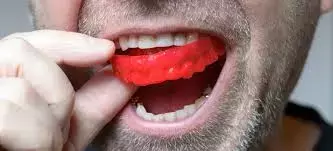- Home
- Medical news & Guidelines
- Anesthesiology
- Cardiology and CTVS
- Critical Care
- Dentistry
- Dermatology
- Diabetes and Endocrinology
- ENT
- Gastroenterology
- Medicine
- Nephrology
- Neurology
- Obstretics-Gynaecology
- Oncology
- Ophthalmology
- Orthopaedics
- Pediatrics-Neonatology
- Psychiatry
- Pulmonology
- Radiology
- Surgery
- Urology
- Laboratory Medicine
- Diet
- Nursing
- Paramedical
- Physiotherapy
- Health news
- Fact Check
- Bone Health Fact Check
- Brain Health Fact Check
- Cancer Related Fact Check
- Child Care Fact Check
- Dental and oral health fact check
- Diabetes and metabolic health fact check
- Diet and Nutrition Fact Check
- Eye and ENT Care Fact Check
- Fitness fact check
- Gut health fact check
- Heart health fact check
- Kidney health fact check
- Medical education fact check
- Men's health fact check
- Respiratory fact check
- Skin and hair care fact check
- Vaccine and Immunization fact check
- Women's health fact check
- AYUSH
- State News
- Andaman and Nicobar Islands
- Andhra Pradesh
- Arunachal Pradesh
- Assam
- Bihar
- Chandigarh
- Chattisgarh
- Dadra and Nagar Haveli
- Daman and Diu
- Delhi
- Goa
- Gujarat
- Haryana
- Himachal Pradesh
- Jammu & Kashmir
- Jharkhand
- Karnataka
- Kerala
- Ladakh
- Lakshadweep
- Madhya Pradesh
- Maharashtra
- Manipur
- Meghalaya
- Mizoram
- Nagaland
- Odisha
- Puducherry
- Punjab
- Rajasthan
- Sikkim
- Tamil Nadu
- Telangana
- Tripura
- Uttar Pradesh
- Uttrakhand
- West Bengal
- Medical Education
- Industry
Multiple treatment modalities including occlusal devices, sleep hygiene, and muscle relaxation may achieve better control of bruxism: Study

Multiple treatment modalities including occlusal devices, sleep hygiene, and muscle relaxation may achieve better control of bruxism suggests a study published in the Journal of Prosthodontics.
The objective was the comparison of an occlusal device (OD), and sleep hygiene and progressive muscle relaxation (SH & PMR) on perceived stress and sleep bruxism activity (burst/episode and episode/hour) in participants with sleep bruxism. Sixty-six participants with self-reported sleep bruxism were selected and randomly allocated into two groups: OD group or SH & PMR group. Assessment of perceived stress and sleep bruxism activity were the primary outcomes. The Perceived Stress Scale-10 (PSS-10 scale) was used to measure perceived stress and bruxism episodes/hour and bursts/episode recorded by electromyography of masseter and temporalis. These outcomes were assessed at baseline, 1 month, 6 months, and 1 year. The paired t-test assessed changes in PSS-10 scores and sleep bruxism activity within the same group over different time points (baseline, 1 month, 6 months, and 1 year).
The unpaired t-test compared scores between two groups (OD and SH & PMR) at each time point to evaluate intervention differences. The chi-square test compared gender distribution between both groups. Results: PSS-10 scores were found to decrease with the OD at 1 month and 6 months compared to baseline and SH & PMR at all subsequent follow-ups. This decrease was not statistically significant (p > 0.05) between the OD and SH & PMR groups at all follow-ups. OD and SH & PMR significantly reduced bruxism episodes/hour and bursts/episode at all follow-ups (p < 0.05). There were no adverse effects related to any intervention. The OD and SH & PMR both effectively reduced PSS-10 scores over 6 months and significantly decreased bruxism episodes and bursts per episode. Both methods are safe and effective for managing sleep bruxism and reducing stress.
Reference:
Tandon A, Singh BP, Shanker R, Agrawal KK, Mahour P, Tripathi SK. Efficacy of occlusal splint versus sleep hygiene and progressive muscle relaxation on perceived stress and sleep bruxism: A randomized clinical trial. J Prosthodont. 2024; 1–8. https://doi.org/10.1111/jopr.13917
Dr. Shravani Dali has completed her BDS from Pravara institute of medical sciences, loni. Following which she extensively worked in the healthcare sector for 2+ years. She has been actively involved in writing blogs in field of health and wellness. Currently she is pursuing her Masters of public health-health administration from Tata institute of social sciences. She can be contacted at editorial@medicaldialogues.in.
Dr Kamal Kant Kohli-MBBS, DTCD- a chest specialist with more than 30 years of practice and a flair for writing clinical articles, Dr Kamal Kant Kohli joined Medical Dialogues as a Chief Editor of Medical News. Besides writing articles, as an editor, he proofreads and verifies all the medical content published on Medical Dialogues including those coming from journals, studies,medical conferences,guidelines etc. Email: drkohli@medicaldialogues.in. Contact no. 011-43720751


